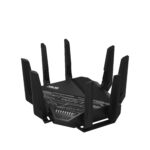In a surprising move that sent shockwaves through the gaming community, Razer has temporarily pulled all of its gaming laptops from sale on its U.S. online store. The decision coincides with escalating import tariffs targeting Chinese-manufactured electronics — a development that’s quickly becoming a nightmare for tech companies operating in the American market.
No More Razer Blades in the US (For Now)
As of early April 2025, visitors to Razer’s U.S. website are met with “Notify Me” buttons or missing product pages where flagship devices like the Razer Blade 16 and Blade 18 once lived. Even the high-end Mercury Edition and RTX 4090-equipped models are nowhere to be found. Only accessories like laptop skins, docking stations, and replacement parts remain listed.

Razer hasn’t released an official statement confirming that tariffs are the cause, but the timing is no coincidence. The U.S. government’s reinstated import tariffs — many of which were originally enacted during the Trump administration and reactivated in early 2025 — are hitting key components and fully assembled devices imported from China and Taiwan. These tariffs are reportedly as high as 25%, drastically impacting margins for companies like Razer, ASUS, MSI, and others that rely on overseas manufacturing.
A Growing Trend in Tech Retrenchment
Razer isn’t alone. Other tech brands, including modular laptop maker Framework, have also halted direct laptop sales to U.S. customers in recent weeks. Some are exploring options to shift manufacturing to other countries like Vietnam, Malaysia, or even back to the U.S., but that’s a long-term solution to a short-term pricing crisis.
For now, companies are forced to either eat the cost increases, pass them on to consumers, or pause sales entirely — a lose-lose-lose situation. Razer appears to have opted for the pause.
Why This Matters to Gamers and Creators
Razer’s gaming laptops have long been known for blending high performance and sleek industrial design. With the Blade series out of reach, U.S. gamers and creators looking for premium portable power are left with limited options. It also introduces concern about future product availability and price hikes across the entire gaming hardware space.
Additionally, this pause could affect the rollout of Razer’s upcoming 2025 laptop refreshes, which were expected to launch with Intel Core Ultra 200-series chips and next-gen NVIDIA RTX 50-series graphics. The question now is: when — or if — these laptops will be available in the U.S., and at what cost?
What You Can Do
For now, your best bet is to:
- Check third-party retailers like Best Buy, Micro Center, or Amazon, which may still have inventory.
- Consider used or refurbished models, especially if you need a Razer Blade urgently.
- Explore alternatives from companies less affected by U.S. tariffs or with local assembly operations.
This situation also serves as a wake-up call for gamers and PC buyers: geopolitical shifts can now directly impact access to your favorite hardware. Keep an eye on Razer’s official channels for updates, but don’t expect a quick resolution — the tariff tension is only heating up.
Key Takeaways
- Razer has temporarily removed all gaming laptops from its US store due to tariff concerns.
- Computer hardware prices may increase across the board as manufacturers respond to new import taxes.
- Consumers seeking high-performance gaming laptops will face fewer options and potential price hikes in the coming months.
Impact of Tariff Uncertainty on the Tech Industry
The tech industry is facing significant disruptions as companies like Razer adjust their sales strategies in response to changing trade policies. These adjustments are creating ripple effects throughout the computer market, affecting pricing, availability, and business operations.
Recent Changes in Trade Policies
The tech sector is currently navigating a complex trade environment with the return of Trump-era tariffs. Razer has pulled all its gaming laptops from its US store, signaling the industry’s concern over these policies. These tariffs specifically target products manufactured in China, which includes many computer components and finished devices.
Companies must now rethink their compliance strategies to address these trade barriers. The policies create a 25% tax on imported electronics, making it difficult for companies to maintain competitive pricing.
Many tech firms are exploring options like:
- Relocating manufacturing facilities
- Restructuring supply chains
- Adjusting pricing models
- Temporarily pausing sales until policy clarity emerges
Tariff Uncertainty Effects on Computer Market
The immediate impact is already visible as Razer has paused sales for several products in the US market. This trend may spread across the industry as other manufacturers face similar pressures. Consumers will likely see higher prices and reduced availability of gaming laptops and other tech products.
Market analysts predict potential price increases of 15-25% on affected products. Supply chain disruptions are expected to worsen as companies scramble to adjust their operations.
The uncertainty has created a challenging environment for both businesses and consumers. Tech companies must balance regulatory compliance with maintaining market competitiveness. Some manufacturers might absorb some costs temporarily, but sustained tariffs will inevitably lead to higher consumer prices and potential shifts in market share across the industry.
Razer’s Response to Market Conditions
Razer has taken swift action in response to changing economic pressures, removing all gaming laptops from their US online store as new tariffs approach.
Razer Withdrawal of Gaming Laptops
Razer has pulled all gaming laptops from its US online store, leaving only accessories like skins, docks, and cables available for purchase. This sudden move appears directly linked to the impending tariffs that would affect imported computer hardware.
The company’s new Blade 16 models, which feature high-performance components and improved battery life, are no longer available for pre-order. Pricing information has also been removed from product pages, suggesting Razer is reassessing its pricing strategy.
Industry analysts believe this is a calculated business decision rather than a supply chain issue. Razer’s premium laptops, many featuring advanced technologies like Thunderbolt 5 connectivity, would likely face significant price increases if subjected to the new tariffs.
Implications for Customers and Product Availability
Customers looking to purchase Razer laptops now face uncertainty about both availability and future pricing. Those who were considering the latest Blade models with their high-performance specs will need to either:
- Wait for Razer to reintroduce products with updated pricing
- Explore alternative gaming laptop brands
- Purchase through third-party retailers while inventory lasts
The sales pause appears temporary as Razer adjusts to the new economic landscape. The timing is particularly challenging as it coincides with the company’s latest product refresh cycle featuring improved battery life and cutting-edge components.
For existing Razer laptop owners, support and accessories remain available. However, the situation highlights how global trade policies can quickly impact consumer technology markets, especially for premium products with complex international supply chains.
Frequently Asked Questions
The tariff situation has created significant disruptions in the gaming laptop market, affecting both manufacturers and consumers in various ways.
What implications do the new tariffs have on the availability of gaming laptops?
The new tariffs are expected to cause price increases across gaming laptops. Manufacturers may need to raise prices by 25% or more to accommodate these additional costs.
Some companies might pull products entirely if they can no longer remain competitive at higher price points.
Supply chains will likely face disruption as companies reassess their manufacturing and distribution strategies to minimize tariff impacts.
How will Razer’s decision to remove gaming laptops from their website affect consumers?
Consumers will face limited direct purchase options, as Razer has removed all gaming laptops from their US online store.
Those seeking Razer products must now turn to third-party retailers, which may have limited inventory or different pricing structures.
Warranty and customer service processes might become more complicated without direct manufacturer sales channels.
What alternatives are available for consumers seeking gaming laptops during this market uncertainty?
Third-party retailers like Best Buy, Amazon, and Newegg may still carry existing Razer laptop inventory, though at potentially higher prices.
Competing brands less affected by tariffs could become more attractive alternatives for consumers.
Refurbished or previous-generation models might offer better value during this period of price volatility.
How long is the removal of gaming laptops expected to last on Razer’s website?
The duration depends largely on how quickly tariff policies are clarified or modified. This uncertainty makes it difficult to provide a specific timeline.
Razer has not made official statements about when they might resume direct laptop sales in the US market.
Industry analysts suggest this situation could persist for months if tariff issues remain unresolved.
What is Razer’s strategy for mitigating the impact of the tariff uncertainty on their product lineup?
Razer appears to be pausing direct sales while assessing the full impact of tariffs on their pricing strategy.
The company continues to sell laptop accessories such as skins, docks, and cables, suggesting a focus on peripherals that may face lower tariff burdens.
Razer may be exploring manufacturing adjustments or component sourcing changes to reduce the tariff impact on future products.
How are other computer market competitors responding to the changes in tariffs?
Some manufacturers are exploring shifting production to countries not affected by the tariffs to maintain competitive pricing.
Larger companies with diverse manufacturing capabilities may absorb some costs temporarily to maintain market share.
Several brands are likely to implement gradual price increases rather than pulling products entirely, depending on their profit margins and market position.







